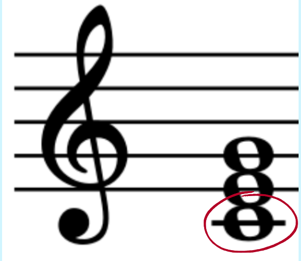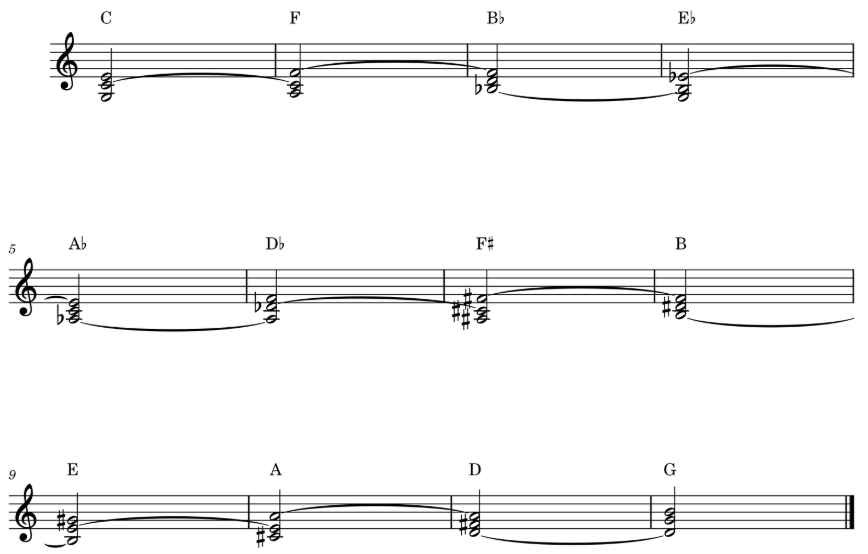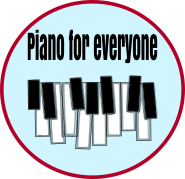As a keyboard player or pianist, you often need to provide harmonic accompaniment for a singer or soloist by playing chords as part of a song’s chord progression. However, playing all those chords comfortably can be tricky, especially if you’re not familiar with all chords and inversions.
That’s why I’ll explain everything you need to know about chords and provide exercises to help you become familiar with frequently used chords and learn to connect them smoothly and with minimal hand movement.
The most frequently used types of chords are triads. Triads are chords consisting of three notes: the root note, third, and fifth.

There are four different types of triads: major, minor, diminished, and augmented, and each one sounds different. Lets talk about the major triad.
Major triad

It consists of the root, which is the lowest note of a chord,

A major third – is when we have three keys between two notes, regardless of whether they are black or white.

A perfect fifth – It occurs when there are six keys between two notes, regardless of whether they are black or white. However, there’s an easier way to find a perfect fifth on the keyboard: if you want a perfect fifth from a white key, simply count five white keys from that key. If you want a perfect fifth from a black key, count four black keys from it. There are some exceptions to the rule: a perfect fifth from B natural upwards is F sharp, and a perfect fifth from B flat upwards is F.

Here is the list of all major triads.

Naming major chords and recognizing their symbols
Chords are named based on their root note and quality. For instance, a major chord with C as the root note is called a C major chord. Major chords are represented by a capital letter. So, if you see a capital C, it means you should play the C major chord. If you see Bb, it means you should play the B flat major chord.
Major chords in root position and in different inversions
A great way to practice chords is to play major chords in the order of the circle of fourths, like this:

You can play these chords with your right hand using the same fingering for each chord: the 1st finger for the root note, the 3rd finger for the third, and the 5th finger for the fifth of a chord. You can also play these chords with your left hand in the lower octave using this fingering: 5th finger for the root, 3rd finger for the third, and the 1st finger for the fifth of a chord.
If you played this example, you likely noticed a lot of jumping around the keyboard. We went through this chord progression, but it doesn’t sound smooth. Our goal should be to connect the chords in the progression as seamlessly as possible. To achieve this, we need to learn a bit more about chords.
The major chords we learned were all in root position, meaning the root note is the bottom note of the chord. If we place the root note an octave higher, we will have the same chords, but they will be in the first inversion. This is the list of all major chords in the first inversion arranged in the chromatic order:

If we place both the root note and the third of a chord an octave higher, we will have the same chord in the second inversion. This is the list of all major chords in the fsecond inversion arranged in the chromatic order:

Why is this helpful? To play a chord progression smoothly, we should hold notes that are the same in two adjacent chords, applying as little hand movement as possible.
To achieve this, we will combine chords in root position with different inversions, and major chords played in the order of the circle of fourths could also be played like this:

We can play the same chord progression starting with the same chord but in a different inversion.

When you play chords, remember not to play them in too high a register or too low. Somewhere around middle C would be best. All right! With these things learned and these exercises under your fingers, you will be able to play all major chords whenever you see them in a chord progression.
